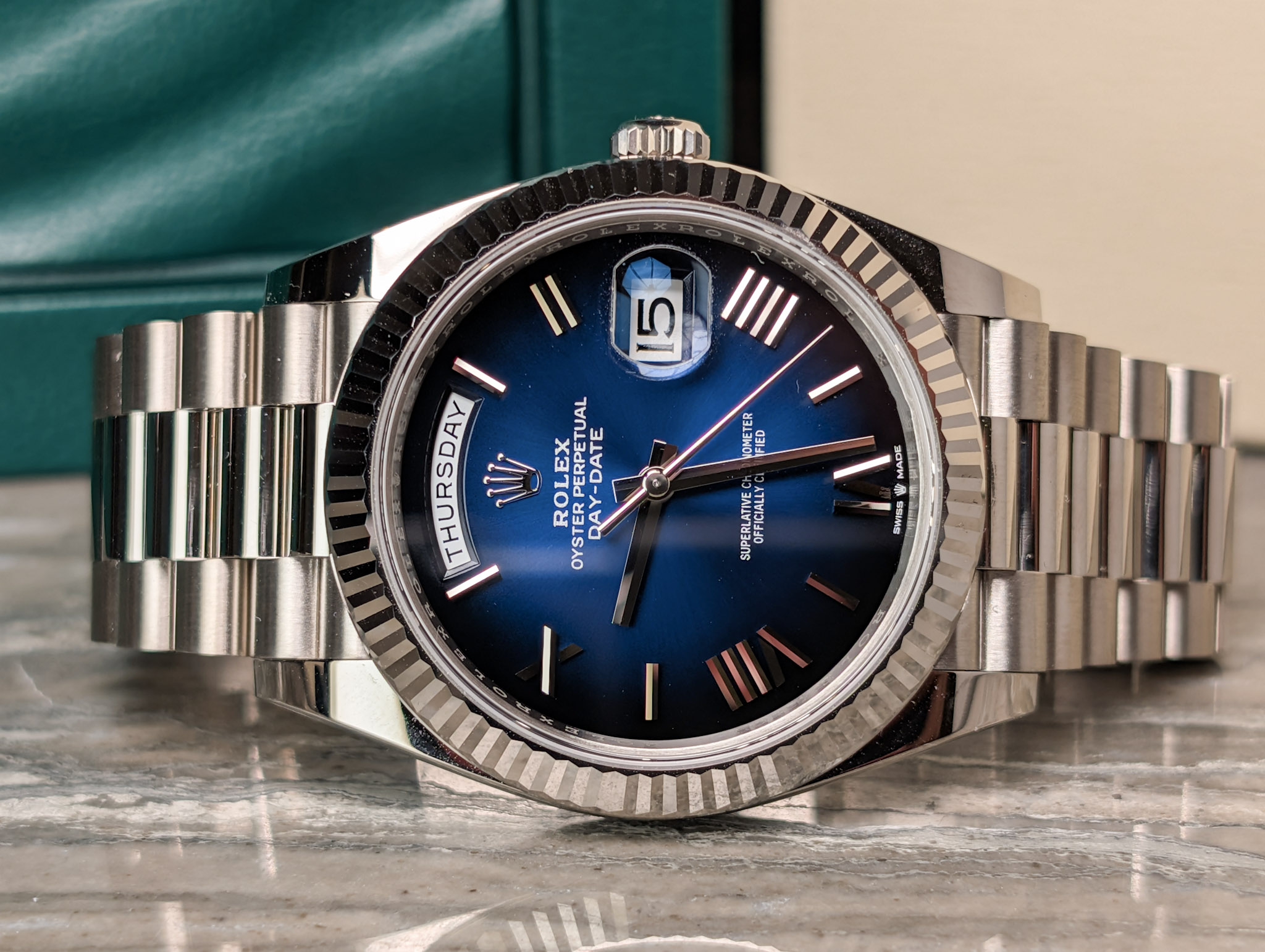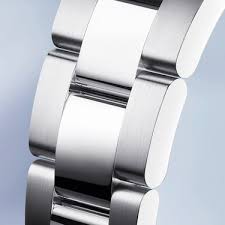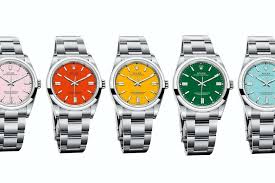
The ultimate guide to the Ombre Rolex dial
The Rolex Ombré Dial: Where Art Meets Engineering
Rolex doesn’t just make watches—it crafts icons. And with the release of the new blue ombré dial for the Day-Date, the brand has once again proven that it knows how to stop collectors in their tracks.
At first glance, it’s mesmerizing: a deep, velvety blue that fades into near-black at the edges. But what looks effortless is anything but. This isn’t just a color—it’s a feat of micro-engineering, artistic nuance, and obsessive quality control.
Here’s how Rolex pulled it off.
The Return of a Vintage Secret
If the ombré dial feels familiar, that’s because it is. Rolex experimented with vignette-style dials back in the 1980s—most notably in deep burgundy and blue Day-Date variants. But the new version isn’t a reissue. It’s a reinvention. Finer gradients. Deeper texture. More dynamic light play.
This is Rolex quietly flexing its ability to blend past and future.
Built on a Radiant Foundation
Before a single drop of color touches the surface, the dial receives a sunray finish—a precise brushing technique that creates fine grooves radiating from the center outward.
This isn’t just decorative. Those microscopic lines act like tiny prisms, scattering light in every direction. It gives the dial its signature “alive” quality—the way it shifts and glows with every tilt of the wrist.
The Ombré Effect: A Dance of Lacquer and Light
Here’s where it gets technical—and impressive.
To achieve the seamless gradient, Rolex uses layered lacquering. The outer perimeter of the dial is carefully darkened with rich black or deep navy lacquer, then blended inward using hand-controlled spray techniques. It sounds simple, but it isn’t.
Each pass requires:
Exact pressure,
Steady movement,
And near-perfect atmospheric control.
A slight inconsistency in the blend? That dial is scrapped.
Rolex doesn’t settle for "almost."
A Glass-Like Finish That Protects—and Amplifies
Once the gradient is just right, a final clear lacquer layer is applied to seal everything in. This not only adds durability, it enhances the sense of depth. The result is a dial that doesn’t just reflect light—it seems to pull you into it.
Drying is done in temperature-controlled chambers, away from even the tiniest specks of dust. At this level, anything less than perfect is unacceptable.
The Final Touches: Markers, Crowns, Perfection
After the dial cures, skilled watchmakers install the hour markers and Rolex crown—usually in solid gold or platinum, depending on the model. Each one is applied by hand under high magnification, ensuring alignment, flatness, and visual balance.
Then comes the inspection: every dial is scrutinized for symmetry, color flow, gloss uniformity, and texture. If the gradient isn’t flawless under magnification, it doesn’t make the cut.
So Why Does It Matter?
Because in a world where many luxury watches rely on shock factor or gimmicks, Rolex quietly obsesses over the details—and the result speaks volumes.
The texture adds life.
The gradient adds emotion.
The perfection adds legacy.
The blue ombré Day-Date isn’t just beautiful—it’s the product of decades of refinement, innovation, and restraint. A modern masterpiece made the Rolex way: slowly, deliberately, and with zero shortcuts.



